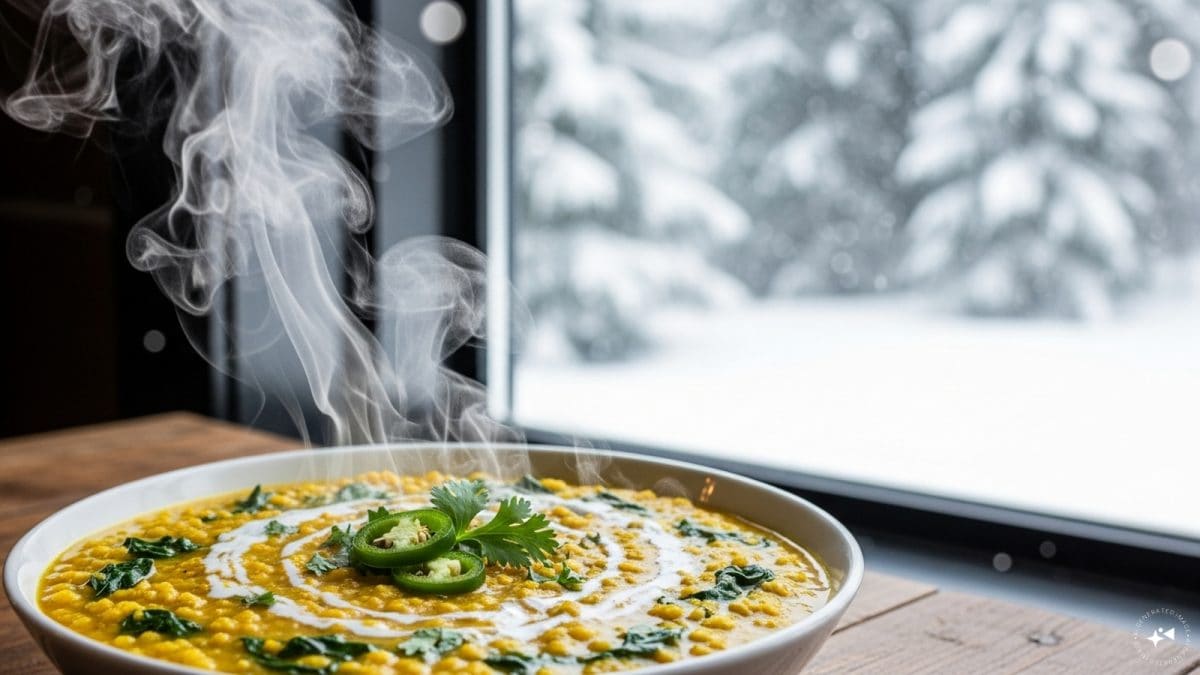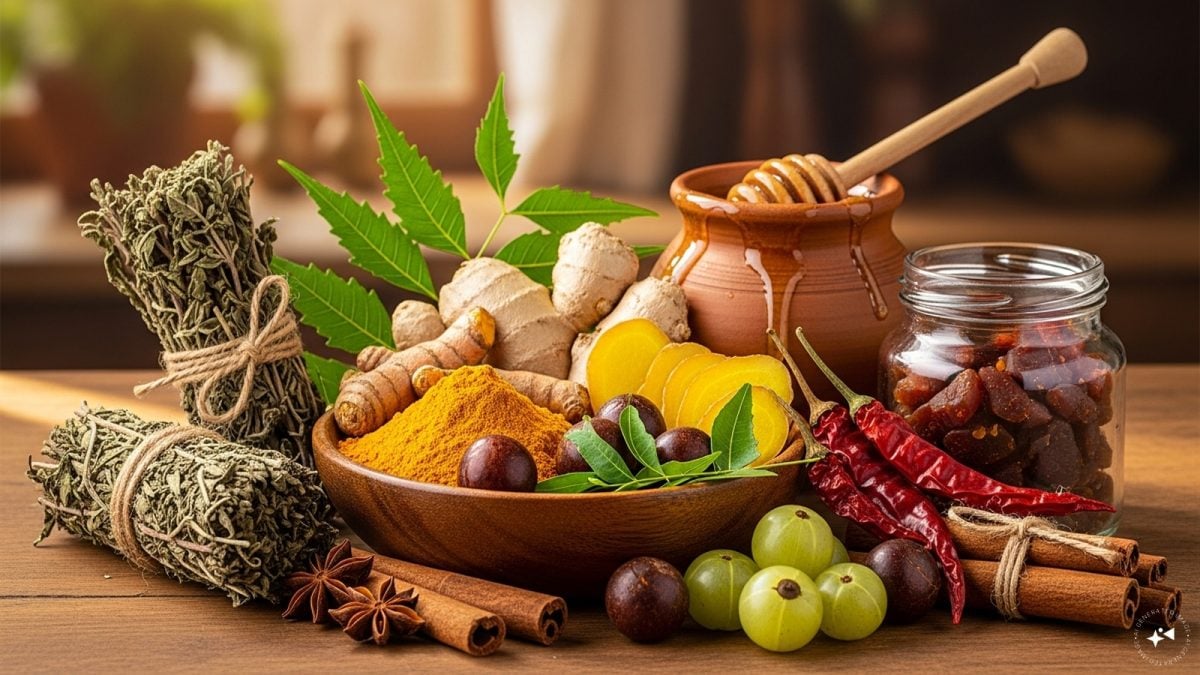Last Updated:
These rustic dals from across India are delicious and wholesome, made with minimal fuss or heaviness

According to Ayurveda, dal is a balanced, nourishing food—rich in protein yet gentle on digestion when prepared right. (AI-generated Image)
As the season changes, most of us lose our taste for regular food. Nor do we crave more indulgences after Diwali. The body wants taste and nourishment, though not from rich or heavy food.
What if we could make our everyday dal-chawal something to look forward to and still align it with a yogic, sattvik way of eating?
According to Ayurveda, dal is a balanced, nourishing food—rich in protein yet gentle on digestion when prepared right.
Arhar (or tur) dal is the most widely consumed lentil. Moong dal, the lightest and most saatvik, is recommended for those practising advanced Yoga. But regular yoga practitioners can enjoy other dals too by balancing the heaviness.
The lightness or heaviness of the dal depends on how it’s cooked and seasoned. Of course, it’s best to keep one’s own system and limits in mind.
“Those with poor digestion will not be able to digest urad and chana dals, and they need to have moong. However, winter is a good time to have a variety of vegetables and dals that you couldn’t digest in summer when pitta dosha is high,” says Delhi-based Ayurveda expert Vaidya Purnima Midha.
TRIED, TESTED, AND SLIGHTLY TWEAKED
Here, we share four regional Indian dal recipes—non-Arhar—that bring variety and nourishment to the table. They use a good mix of spices that boost appetite and aid digestion.
These slightly tweaked versions are tried-and-tested and validated by an Ayurvedacharya. Pair with good-quality Basmati rice and top with some warm ghee—both add to the digestibility and nourishment—for a hearty, comforting meal.
SIMPLE, SOUL-WARMING WHOLE MASOOR DAL
Flavourful, yet light, with a home-style taste
Ingredients
1 cup whole masoor dal; 2 tomatoes; 2 green chillies; 1 tbsp grated ginger; salt to taste; half tsp turmeric powder; 1 tsp coriander powder; 1 tbsp mustard oil or ghee; 1 tsp cumin seeds; 1 tsp homemade garam masala powder, and half cup pudina (mint) leaves.
Method
Wash and soak dal in water for 4-5 hours, then cook with salt, turmeric and two cups water in a pressure cooker. After 1 whistle, cook on slow for 4-5 minutes and remove from heat.
Heat 1 tbsp mustard oil or ghee in a wok and add the cumin seeds and green chillies. When they splutter, add coriander powder, finely chopped tomatoes and grated ginger. Cook on a medium flame until tomatoes are cooked and oil begins to separate. Add mint leaves and stir.
Pour the cooked dal into the wok, mix well, and simmer for 5 minutes on low flame. Add garam masala, give a quick mix and remove from heat.
Serve hot, sprinkled with fresh coriander leaves and some lime juice.
SOOTHING RIDGE GOURD-MOONG DAL
A mild and cooling South-Indian kootu-style preparation.
Ingredients
Half cup moong dal; 2 cups peeled and chopped ridge gourd; a large pinch turmeric powder; pinch of asafoetida; salt to taste; paste made with half cup grated fresh coconut, 1 tsp cumin seeds and 1 tsp whole black pepper.
For seasoning, use 1 tbsp coconut or refined oil, half tsp mustard seeds, pinch of asafoetida, 1 split green chilli and a sprig of fresh curry leaves.
Method
Combine the washed and soaked moong dal, ridge gourd, turmeric powder, salt, asafoetida and a cup of water in a pressure cooker. Cook for 1 whistle, turn off the flame, and allow to cool.
Next, add the coconut paste to the dal mixture, adjust the consistency to your liking, and let it cook on low heat for 10 minutes until well blended.
Heat the oil in a tadka pan and add seasoning ingredients. Stir for a few seconds until fragrant and pour on top of the dal-coconut mixture and mix well.
Tip from the Ayurveda expert: To lower the pitta dosha even further, skip the green chilli in the seasoning. Instead, pour heated oil over it and let it seep for 10 minutes, then add to the dal mixture.
EARTHY URAD DAL-SPINACH SAGPAITA
A rustic dal from Uttar Pradesh, known for its strength and flavours. Urad dal, often considered heavy, is combined with digestive spices like ginger and cumin to make it lighter.
Says Vaidya Midha, “Urad dal is wonderful for strength and so is spinach. But both need a robust constitution, hence winter is the ideal season to have this.” Those with high pitta dosha could also add fennel and coriander powders, she adds.
Ingredients
Half cup split urad dal with skin; 1 tbsp grated ginger; 2 cups finely chopped spinach; a pinch of asafoetida; two pinches turmeric powder; 1 tbsp cumin powder; 1 tsp crushed pepper.
For seasoning, use 1 tbsp mustard oil or ghee, 1 tbsp finely chopped garlic, a pinch of asafoetida, and 1-2 whole red chillies broken into two.
Method
Wash and soak the dal for 4-5 hours. Rinse again, taking care not to lose the skin. Add all ingredients with a cup of water and pressure cook for 2 whistles. Then cook on low heat for 10-15 minutes and switch off. When cooled, open and mix the spinach-dal gently.
For tempering, heat ghee in a small pan and fry the garlic till brown. Add broken red chillies and asafoetida and stir. Pour into the dal mixture. Mix well and close the lid to let the flavours infuse.
Serve with rice, ghee, and carrot-cucumber raita.
ANDHRA-STYLE TANGY DAL-VEGETABLE STEW
A mouth-watering soupy dish that spells ‘comforting soul food’. Besides being satisfying and nourishing, it is also cleansing.
“Tamarind aids digestion and is traditionally considered beneficial for women’s health. Those who want to avoid it can use anardana or amchur (pomegranate seed powder, mango powder) instead,” says Vaidya Midha.
Ingredients
A small cup of tur dal cooked with turmeric and water, mashed; 1 tbsp each of pepper powder and coriander powder; 1 tsp cumin powder; 1 green chilli slit lengthwise; tamarind juice made with a 5-inch tamarind strip soaked in warm water; 1 tbsp sugar or jaggery; a large cup of chopped mixed vegetables like onions, carrot, beans, okra, pumpkin, potato; salt to taste.
For seasoning, use 1 tbsp groundnut oil or ghee, 1 tsp mustard seeds, 1 tsp cumin seeds, half tsp fenugreek seeds, 4-5 crushed cloves of garlic, 1 dried red chilli, a sprig of curry leaves with stem.
Method
In a heavy-bottomed pot, add the mashed tur dal, vegetables, green chilli, pepper powder, coriander powder, cumin powder, and 3 cups of water. Bring to a boil, then reduce heat and simmer until vegetables are tender.
Once the vegetables are cooked, add tamarind juice, salt and jaggery (or sugar). Allow it to simmer for 15 minutes, so the raw taste of tamarind disappears.
Temper by heating oil or ghee in a small pan and add the crushed garlic. When it turns brown, add mustard, cumin, fenugreek, and let them splutter. Add red chillies, asafoetida, curry leaves and sauté till it turns aromatic. Don’t burn the seasoning.
Pour the seasoning over the dal-vegetable mixture, cover, and let it rest for 10 minutes for the flavours to come together.
Serve with steamed rice, papad, and a glass of tempered buttermilk (curd whisked with water and seasoned with mustard and curry leaves).
FOOD FOR THE SOUL
Each of these dals is light, seasonal and prepared with awareness, which adds up to mindful cooking. As Vaidya Midha puts it, “Food cooked fresh, with love, and suitable to season and digestion is itself medicine.”
The author is a journalist, cancer survivor and certified yoga teacher. She can be reached at swatikamal@gmail.com.
November 01, 2025, 10:08 IST







